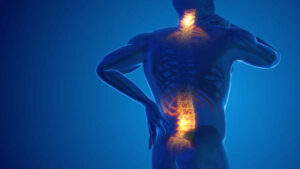What Is Back Pain?

Back pain is one of the most common physical complaints among grown-ups and a principal cause of misery for numerous. At some point in their lives, most people will witness some kind of back discomfort. Back pain describes pain or discomfort felt in the upper, middle, or lower reverse.
The pain may extend to the hips and legs as well. The reverse consists of a complex arrangement of bone, ligaments, joints, muscles, and jitters, and pain can be affected by a problem with any of these factors. The most common type of reverse pain is low back pain. That is because the lower portion of the reverse is under the most pressure when a person is sitting or lifting, and it can be fluently damaged.
There are numerous causes of reverse pain. The most common cause is a strain of the reverse, which is a small gash of the reverse muscles or ligaments. This generally results from an unforeseen or awkward movement, or from lifting a heavy object. But frequently, a person can not flash back a particular incident that brought on the pain. Other common causes include poor muscle tone in the reverse, pressure or spasm of the reverse muscles and problems with the joints that make up the reverse.
Nice to Know Some 50 times ago back pain was seen in simple terms. moment, there’s better understanding of the complex nature of the spinal structures, and the relationship of the brain and spinal cord. As a result, the causes of reverse problems are linked with much lesser delicacy.
Back pain can be classified as either Acute-unforeseen pain that lasts for just a short while, generally a many days to a many weeks. Chronic- Pain that lasts for further than three month, or pain that recurs. Statistics show that with simple treatment, up to 90 of people with acute reverse pain ameliorate within one month and up to 60 ameliorate within a week. Indeed severe reverse pain due to a herniated slice frequently resolves within six weeks, as the pooching discs begins to shrink.
Fortunately, utmost cases of acute low reverse pain ameliorate snappily- within a many days, or occasionally within a many weeks. And in lower than 5 of people the pain persists and becomes habitual. Nice to Know How common is low back pain? Low reverse pain is common. At some point in their lives, utmost people will witness some form of back discomfort. Some experimenters believe that back pain is a problem of civilization-primitive lines lived by hunting and didn’t witness the type of reverse pain that comes from sitting in chairpersons, in moment’s culture, from our veritably childhood at academy.
Other experimenters believe that people began to witness back pain as soon as man began to walk in an upright manner. Despite moment’s adding medical technology and understanding, back pain continues to be an egregious and complex problem.
Data About Back Pain
In the U.S., back pain competes with the common cold wave as the commanding reason why people see a croaker
. Back pain is the number- one cause of disability in workers under age 45. Away from the physical torture, back pain carries steep profitable costs- an estimated$ 20 to$ 50 billion annually in medical treatments and disability payments. utmost occurrences of acute reverse pain go down within a month. Despite moment’s medical technology, numerous forms of treatment don’t affect the course of utmost acute low reverse pain occurrences. Only 10 of those suffering from acute reverse pain bear special individual testing. Who Is At threat? Certain people are at advanced threat for reverse pain, including Those whose work includes heavy labor or long ages of sitting and standing. Those who are” out of shape,” as they may have let the muscles in the tummy and back come weak and fluently fatigued, placing redundant strain on the muscles and joints of the reverse. Those who have jobs that subdue their tails to a lot of vibration. Those who do heavy lifting without having the proper education and training to lift rightly. Those who bomb( smokers are more likely than nonsmokers to suffer from back pain).